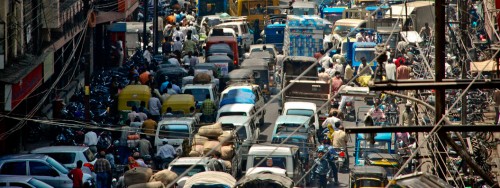Blogs
.jpg)
India carries one of the highest global burdens of the maternal and child malnutrition. More than one-third of the world's malnourished children live in India. In India, 38.4 percent of children under the age of five are stunted, while more than half of the children between 6-59 months and women between 15- 49 years of age are. In this context, the National Nutrition Mission (NNM), launched by the government of India is a welcome development. The NNM aspires to make India malnutrition free by 2022. To put this issue and the NNM in perspective, a technical discussion was organised as part of the Third BoP Global Network Summit held in New Delhi between 18th to 20th April 2018. The panel members discussed the present discourse on the maternal and child malnutrition in India and the possible ways in which it can be addressed by various stakeholders including the civil society and private sector.

According to a latest University College London led commission the threat to human health from climate change is so great that it could undermine the last fifty years of gains in development and global health. Climate change impacts health indirectly through air, water, food and vectors and directly through thermal stress as well as climate disasters such as floods, droughts and cyclones. The Bihar Technical Assistance Support Team (BTAST) was set-up for a sector-wide approach to health with nutrition as well as water and sanitation issues. This project extends the sector-wide approach to climate disasters by focusing on the most vulnerable flood affected areas.

Indian heat action plans rely on satellite based data and forecasts. These data sets are coarse data based on a few stations across the city. The temperature across any large city with a high population density can show a variation range of 2 to 5 degrees depending on canopy, wind movement, construction of buildings etc. Due to unplanned and rapid urbanisation all major large and medium sized cities in India are facing the phenomenon of urban heat islands. In order to address and mitigate the effects of urban heat islands it is important to understand the variations across the city to take action on ground. Understanding this phenomenon directly enables people to reach thermal comfort. Thermal comfort indexes can be determined and derived by temperature and humidity monitoring.
